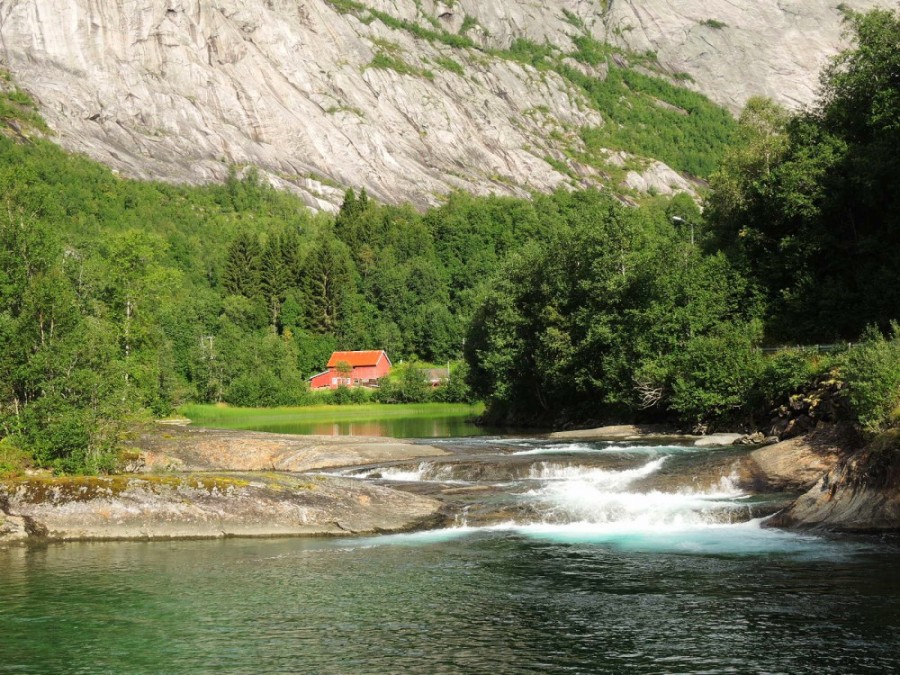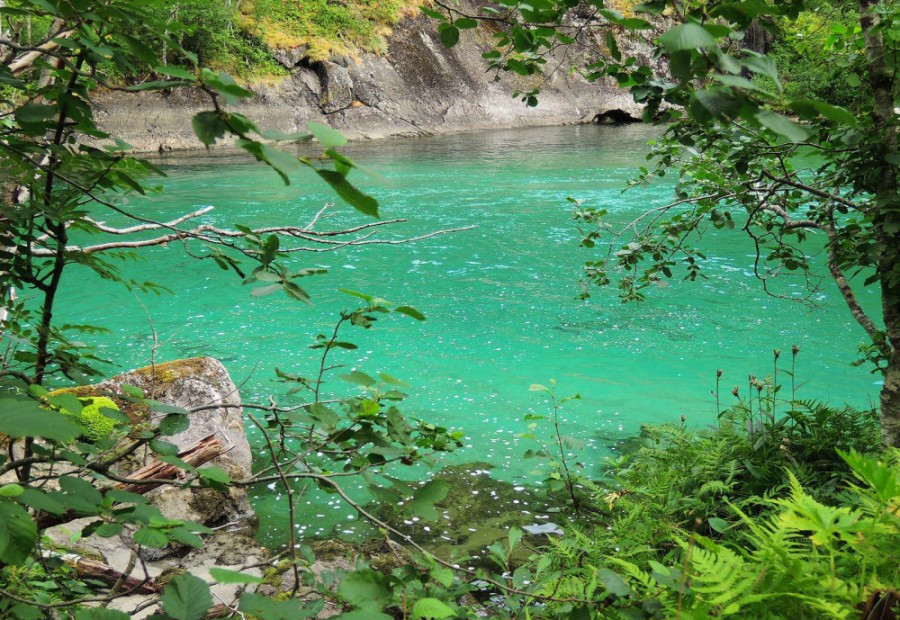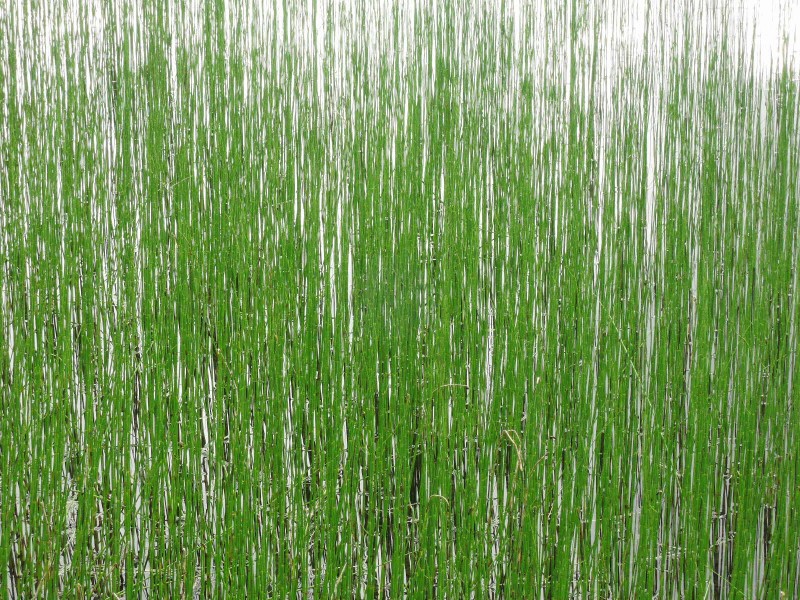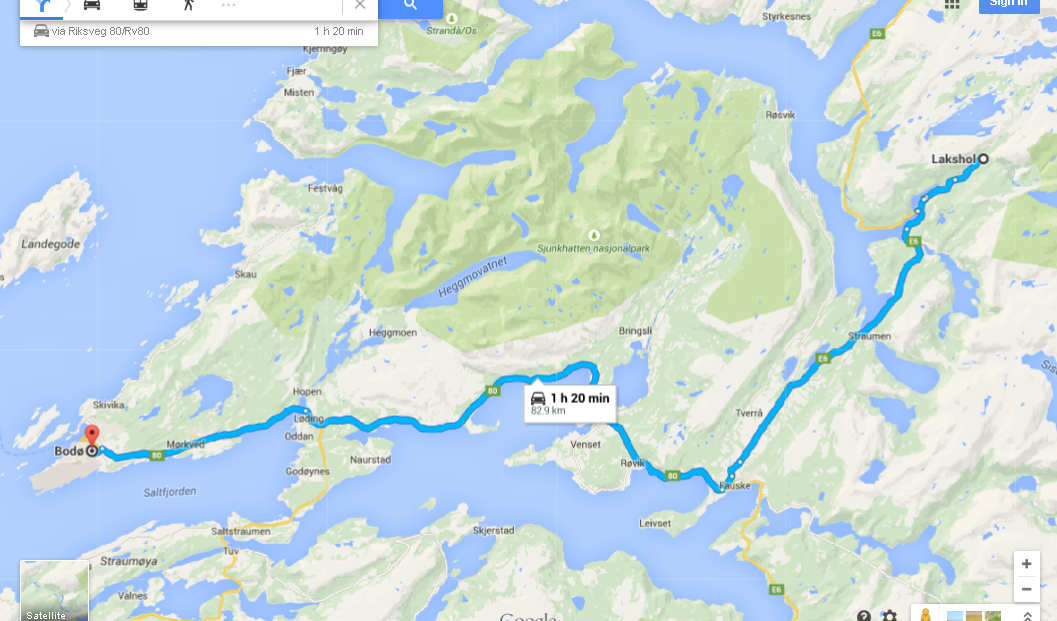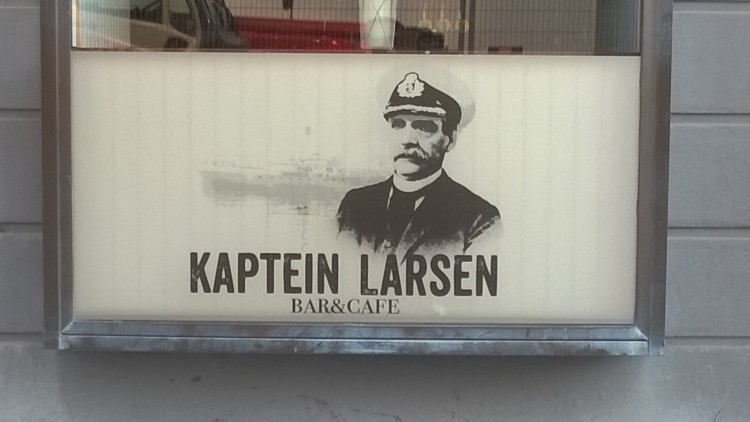I’m still in this fable-like valley I entered yesterday through a hidden tunnel in the corner of a fiord: the campsite, the Laksagaosen ecological reserve, the Nordfjordelva river of clean turquoise blue waters coming down from the glaciers…
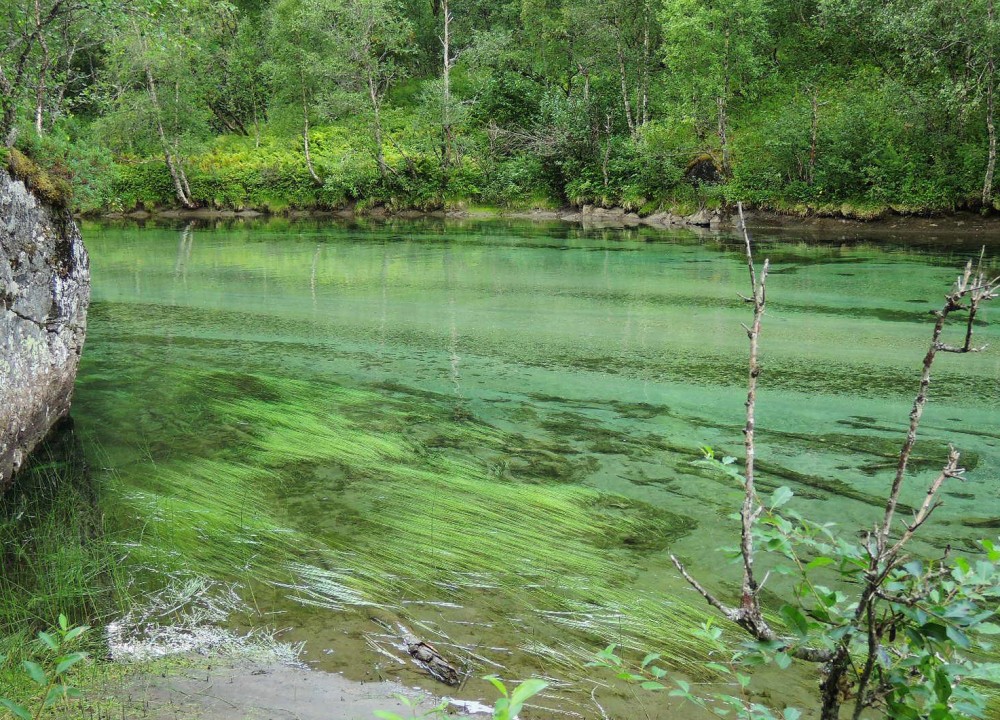
At the end of the narrow road along the valley there is a place called Lakshol, where a difficult trecking route starts that, presumedly, goes all the way up to the high lakes where the turquoise magic occurs, and giddy waterfalls too. The campsite’s caretaker has strongly reccommended it to me, and I’m going to invest a few hours in the task. My appointment with the maelstrom will need to wait one more day.
Another useful piece of information–actually very useful–I’ve collected from that fellow is a tide sheet for Bodo, with the sea level differences between high and low water, which today (August 23rd) will be 1.57 m and tomorrow 1.80 m. Yet one day later it’ll be 2.10 m, the maximum tide this month (the bigger the tide, the strongest the stream and the eddies).
Passed a very steep slope at the beginning, the first few hectometres of this path are rather smooth, going slightly up along the Storskogelva river of turquoise blue, a colour with which I’m starting to get familiar.
My thoughts, however, run along a not so idyllic course. Last night has been the worst of the last three months’ journey, so far. Despite my cabin being so pretty, the heater was insufficient for warming it up, considering how humid and shady the valley is. And though I wrapped myself up in all the sheets I could use, plus double pajamas and my coat, it was hard to get some sleep.
Besides, and despite the campground being very quiet, two or three families came night-picnicking right in front of my place; and they weren’t in a hurry for ending their little party. Adults were talking and lads were running and shouting about — which is quite normal, of course, but why don’t they run and shout around their own huts? It was past midnight when they left.
But… what a contrast between my dark coloured thoughs and the lovely greens of this valley! Why can’t my spirit absorb this peace? Why needs my mood to be so impervious to this armonious nature?
That’s the way it is. We often — thoughtlessly — envy a traveller’s life and regard too romantically the solitary nomad, the rover, the wanderer; but few people know how bad some of his days can get. Days in which solitude and setbacks weigh like a tombstone, or when he’s simply seized by the darkest thoughts he has inside.
Thus, I come to think that despite I’m already on my way back in this Journey to Nowhere I set on a few months ago — this trip without a destination — bounced back south by the Arctic Ocean, still I haven’t learnt anything important about life or myself. Sure, I’ve seen fabulous places, but I know nothing new about what — at the end of the day — really matters. And anxiety keeps visiting me every night with stubborn punctuality, often at daytime as well. Now for instance, as I record these words, it’s there, in my stomach, sticking to me with my doglike loyalty.
Nor my thoughts are a tiny bit clearer than three months ago, about the concerns that grip and beset me for too many years now; what to do about this senseless wandering around, about the future (which is made of off the matter of the past); what is my project, how to live..? Nothing. I feel I’m coming back to the starting point as empty-handed as I was, or even emptier, because hopes are dwindling.
As I hike along the path (is this a metaphor? No, but it might have been), the terrain gets steeper and the Storskogelva becomes a brook, less mighty, more wild. Here and there the track fades and I need to find it on the rocks or on the stream’s muddy banks. Despite of the coolness, I’m already sweating. The trek has become a climb, and I’m quickly gaining altitude.
Every minute I look to my right, into the distance, scanning for the Sorfold, the 200 m high waterfall that I’m supposed to see; but I can’t find it. I have a map with the contour lines of the land, where I can’t even locate myself. Have I mistaken the way? Eventually the ground gets more levelled and I coast along again. Often I stop to listen for the cascade, yet I hear nothing but the birds’ tweets and the rustle of the wind on the trees. After two hours of walking, I give up and turn back, defeated.
This aquatic plants of sinuous movement in the stream flow remind me of Solaris, that strange and shocking film by Tarkovski based upon Lem’s philosophical novel.
Quite interesting a walk, though, even though I haven’t found the cascade I was after. But it’s time to keep moving. So, back to where Rosaura awaits me, riding boots on, zip up my coat and let’s go.
On a stop in Loding for buying some groceries in the supermarket, I stumble upon three or four black guys, black like coal. Subsaharians, I guess; obviously not tourists, and they didn’t arrive here yesterday on a dinghy either. What are they doing in a Scandinavian country, a fishermen’s land, elves, eskimos and vikings, north of the Arctic Circle, so far from the coasts of Africa?
With its 50,000 inhabitants, Bodo is the capital of Nordland county and the second largest town in northern Norway, after Tromso. Despite being almost two centuries old, scarcely any ancient buildings remain because they were mostly destroyed by the Luftwaffe during WWII. Even though Bodo’s harbour is bright and there are a few pictoresque restaurants downtown, it can’t compare with Tromso, definitely nicer and more lively. Still, I’ve been quite lucky today, since the twilight sky is cloudless and looks lovely over the fishing ships and the yatches. It’s strange that I don’t see almost any people around.
Correction: sitting at a wooden table by the peer there are four subsaharians with a buggy (which, I guess, totals five), speaking in suahili or something like that. Same as the ones in the supermarket, these haven’t just arrived, and they seem to be here to stay. Again I wonder, with increasing curiosity, what the hell are they doing seven thousand kilometres off their countries? And wouldn’t they be happier in Spain, instead?
Whatever. It’s a perfect evening for sitting at a sunny terrace facing the peers and the ships; so, I pick the best located one and order a beer. While pouring it, the waiter tells me I can’t eat a few peanuts I’m picking from a small bag I got in a shop next door, because I haven’t bought them in the bar. I space out. Do you need to come to the most expensive pub in Bodo, ten euros a beer, to stand being forbidden a fistful of peanuts out of your pocket? Oh, Lord! Well, I tell him ‘no problem’, then go to the terrace and eat my peanuts all the same; but I have to confess, he’s already spoiled my beer.
On a neighbouring table I hear people talking a language that sounds familiar to me. It’s Polish. Those are also everywhere, those Poles; but for affording to come to Norway, five times as expensive than Poland, these ones must be quite well off.
Later on, while meandering about, I see a pub with an interesting name: Kaptein Larsen. I wonder if it has something to do with the famous novel by Jack London, The sea wolf, whose main caracter is precisely a captain Larsen. What an unforgettable book was that!
By the way, it’s 8 pm on a Saturday evening and I still don’t see almost any people out. There is some distant music; maybe a festival? I walk chasing after the sound, and on a crossing somewhere in uptown Bodo, from a gate there come out two black children on bicycles. One block further, another black young woman talking on the phone. This must be Bodo’s Harlem, and Bodo must be Norway’s Johannesburg. This is definitely surprising for a country without the least bonds or connections with Africa.
Which reminds me of one day in Poland — namely in Krakow — five or six years ago. I was drinking a beer somewhere and engaged in a small chat with a black fellow, lonely as me. As usual, I asked him where he was from, and when he replied ‘Norway’ I got a bit puzzled. Upon noticing my surprise, he — notoriously displeased — provided me with the explanation: he’d been adopted by a Norwegian couple. But it was evident he didn’t like my unforgivable sin: I had made wrong assumptions about his nationality out of his skin colur. How unforgivable is that? Whatever. And the funny thing is, he finally didn’t tell me where he was really from!
Back to Bodo. In the outskirts, I come across the source of the music and the reason why the town centre is so quiet: there is a music festival, something called Parkenfestivalen. Blacks all over — sorry to insist — on the same clothes and style you’d see them in slum Madrid or perhaps the Bronx. Is that taste a DNA-hardcoded thing, or do they dress like that for a stronger solidarity with their ‘brothers’?
When, finally, I get back to my hotel, I can’t help asking the receptionist about the reason for so many Subsaharians in a town so far from the Sahara. She gives me a reproachful look (which I, in turn, suspect tutored) and replies: they’re refugees.
Refugees, you see.

